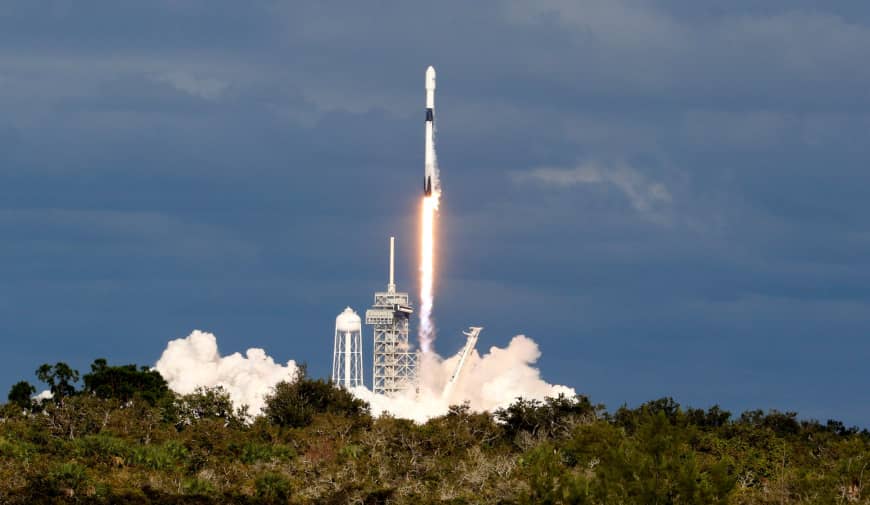Spacex Launches 64 Satellites Successfully
Vandenberg Air Force Base, Calif., Dec. 3, 2018 — SpaceX successfully launched today SmallSat Express to a low Earth orbit from Space Launch Complex 4E (SLC-4E) at Vandenberg Air Force Base. Carrying 64 payloads, this mission represented the largest single rideshare mission from a U.S.-based launch vehicle to date. A series of six deployments occurred approximately 13 to 43 minutes after liftoff, after which Spaceflight began to command its own deployment sequences. Spaceflight’s deployments are expected to occur over a period of six hours.

The mission also served as the first time SpaceX launched the same booster a third time. Falcon 9’s first stage for the Spaceflight SSO-A: Sm
allSat Express mission previously supported the Bangabandhu Satellite-1 mission in May 2018 and the Merah Putih mission in August 2018. Following stage separation, SpaceX landed Falcon 9’s first stage on the “Just Read the Instructions” droneship, which was stationed in the Pacific Ocean. You can watch a replay of the launch webcast below and find out more about the mission in our press kit.
A total of 64 spacecraft from 34 organizations were launched as part of the Spaceflight SSO-A: SmallSat Express mission. The mission signified Spaceflight’s first dedicated rideshare mission to a sun-synchronous low Earth orbit and represents the company’s effort to accommodate the growing number of domestic, international, government, and commercial customers seeking affordable rideshare options to launch their spacecraft into orbit. Spaceflight SSO-A: SmallSat Express is the largest single rideshare mission from a U.S.-based launch vehicle to-date.
The mission includes 15 microsats and 49 cubesats from commercial and government entities, like universities, startups, and even a middle school. The payloads, which vary from technology demonstrations and imaging satellites to educational research endeavors, are from 17 countries, including the U.S., Australia, Italy, Netherlands, Finland, South Korea, Spain, Switzerland, U.K., Germany, Jordan, Kazakhstan, Thailand, Poland, Canada, Brazil, and India.
Spaceflight also constructed a unique payload stack, which is one of the most complex and intricate endeavors that Spaceflight has undertaken. The smallsats will be integrated with a variety of dispensers and avionics to an upper free flyer and lower free flyer.
Space Launch Complex 4E at Vandenberg Air Force Base
SpaceX’s Space Launch Complex 4E at Vandenberg Air Force Base has a long history dating back to the early 1960s. Originally an Atlas launch pad activated in 1962, SLC-4E was in active use until its last Titan IV launch in 2005. SpaceX’s groundbreaking was in July 2011, and extensive modifications and reconstruction of the launch pad were completed just 17 months later.
SLC-4E consisted of a concrete launch pad/apron and a flame exhaust duct. Surrounding the pad are RP-1 and liquid oxygen storage tanks and an integration hangar. Before launch, Falcon 9’s stages, fairing and the mission payload are housed inside the hangar. A crane/lift system moves Falcon 9 into a transporter erector system and the fairing and its payload are mated to the rocket. The vehicle is rolled from the hangar to the launch pad shortly before launch to minimize exposure to the elements.





